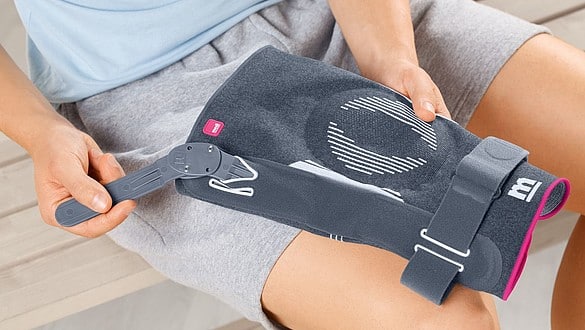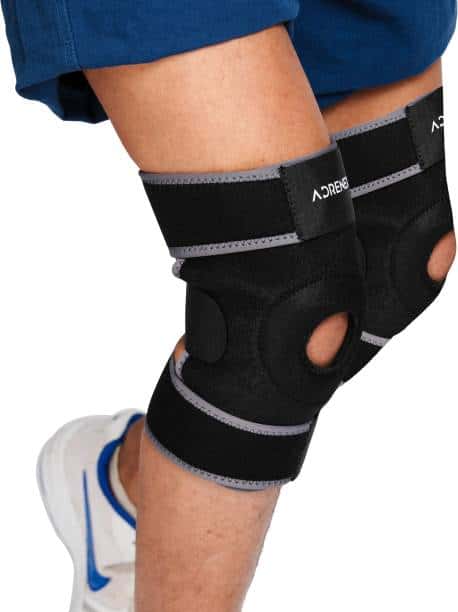Knees are always the first to go. It’s not very often we hear, “oh, I would love to go with you, but my elbows are acting up.” Knees take the brunt of the impact in every movement that requires our legs. From lifting to running, dancing, and even swimming, our knees are an integral piece of human movement. And they take a beating every time we get up. When we were younger, we couldn’t imagine how one could even move without perfect knees.
Sports were never a problem. We probably went to practice, then the gym, then danced the night away. It didn’t matter back then. But repeated use and abuse can cause some problems over time. If you’re looking to keep your knees healthy after an injury, or you are just looking to prevent anything from going wrong, investing in knee support may be the right move for you.
You don’t have to wait for an injury to keep them stable with some extra help. Even small, minor knee pain can turn into something much worse if you let it go too far. Here is a list of the different types of knee support that you can use depending on your needs.
IMAGE: PIXABAY
The Recreational Gym Goer – Level 1, Open Patella
For most of us, who just want some extra assurance when we do basic exercises, a level 1, open patella knee sleeve is your best bet. A level one sleeve is the most flexible kind available and can range in their thickness. It is meant for active people experiencing mild knee pain while engaging in physical activity.
Its most prominent feature is being able to provide the most amount of comfort while still giving the support you need. The open portion keeps the sleeve from compressing the patella and patellar tendon down, thus allowing for a more free range of motion while performing light to moderate exercises.
By “light to moderate”, we mean general cardiovascular exercises, dancing, and your basic machine circuits. This option is perfect for those early evening Zumba classes or a trip to your local gym. It’s the most versatile of the options and helps provide an all-around good stable base to move from.
They’re easy to slip on and can be worn throughout the day if you need to. They’re also useful for the post-treatment stages of injury rehab. Using this sleeve, of course, is assuming that you’re not involved in professional sports or serious weightlifting. Those require a completely different class of support.
The Previously Injured – Level 2, Knee Brace
If you’re suffering from moderate to severe knee pain, you may need a level 2 brace. A level 2 knee brace is characterized by having adjustable straps and multiple layers of compression to make absolutely sure that the knee complex doesn’t go out of place during movement.
If you need a level 2 brace, you’re probably not inclined to do any intensive team sports or powerlifting. This stability implement is what you see in most pharmacies and ortho clinics. They provide an adequate amount of movement to get around without compromising on the joint.
For aesthetic and comfort preferences, two variations of level 2 exist the dual wrap and the wraparound. Dual wrap is your classic branch with two straps above and below the knee. The wraparound is somewhat like a modified sleeve with thick wraps that tighten around the knee.
Recovery And Stability – Level 3, Hinge Brace
New physical therapy patients are recommended to be in a level 3 hinge brace. They’re very specific and are often sold as a specialty item. This is why you need to choose the right knee support for your particular need instead of picking one off of the shelf.
Level 3 offers the most amount of support and restricts the most movement to the absolute narrowest possible angles that allow you to walk. It is mainly meant to keep you mobile while you heal and is the choice of doctors post-surgery.
The level 3 hinge has a plastic or a metal joint on each side of the knee that holds the medial and lateral sides in place while you move. The tiers higher than three are for primary instability conditions that require extra stability when taking each step.
The Professional Lifter – Level 1, Closed Patella
For competitive powerlifters and weightlifters, your class of knee sleeve is similar to the casual exercise enthusiast. The classification is still a level one support sleeve, but significantly thicker and covering the patella. Because of the dynamic of competitive weightlifting, one doesn’t need much lateral movement. Essentially, the pressure on your knees is relative to a weight moving in a single vertical plane.
It is necessary, then, to cover the patella and make sure that it stays in place during the entire activation of the quadriceps and the pulling action of its tendon. Olympic style weightlifting, of course, may need a more flexible sleeve due to each lift being two multi-joint movements put into a single task.
Powerlifting, on the other hand, doesn’t only use knee sleeves for support, but to get an extra “spring” in their squat. So when looking for a sleeve for these activities, 7mm thickness–the thickest one commercially sold, is the best option. 5mm is your best option for Olympic style weightlifting.
The Team Athlete – Level 1, With Pads
If you’re in a team sport like basketball and football, you’re more prone to knee injuries than anyone else. Statistically, it’s not a matter of “if” you will find yourself with a compromised knee, it’s “when”. None of these injuries are fun and can put you out of the game for weeks or even months.
So to protect your most important joint complex for movement, a good, long knee sleeve with padding is your best option. The length of the sleeve is meant to compress the entire complex, including the muscles involved in the motions.
The added tightness is necessary for the quick lateral and sudden jumping movements. The pad on the sleeve is to protect against mechanical damage. Injury due to falling, scraping, knocking, etc. is widespread in sports like basketball and football. This poses an increased need to keep the whole area safe while still being able to perform at optimal levels throughout the game.
Choosing the right knee brace is easy if you’ve got an idea of your personal needs. And whether it’s for sports or post-surgery recovery, having a bit of extra support is always a good idea. Nobody wants to have mobility issues before their time. And like all things healthy, a bit of prevention goes a long way.
If you are interested in even more lifestyle-related articles and information from us here at Bit Rebels, then we have a lot to choose from.


COMMENTS